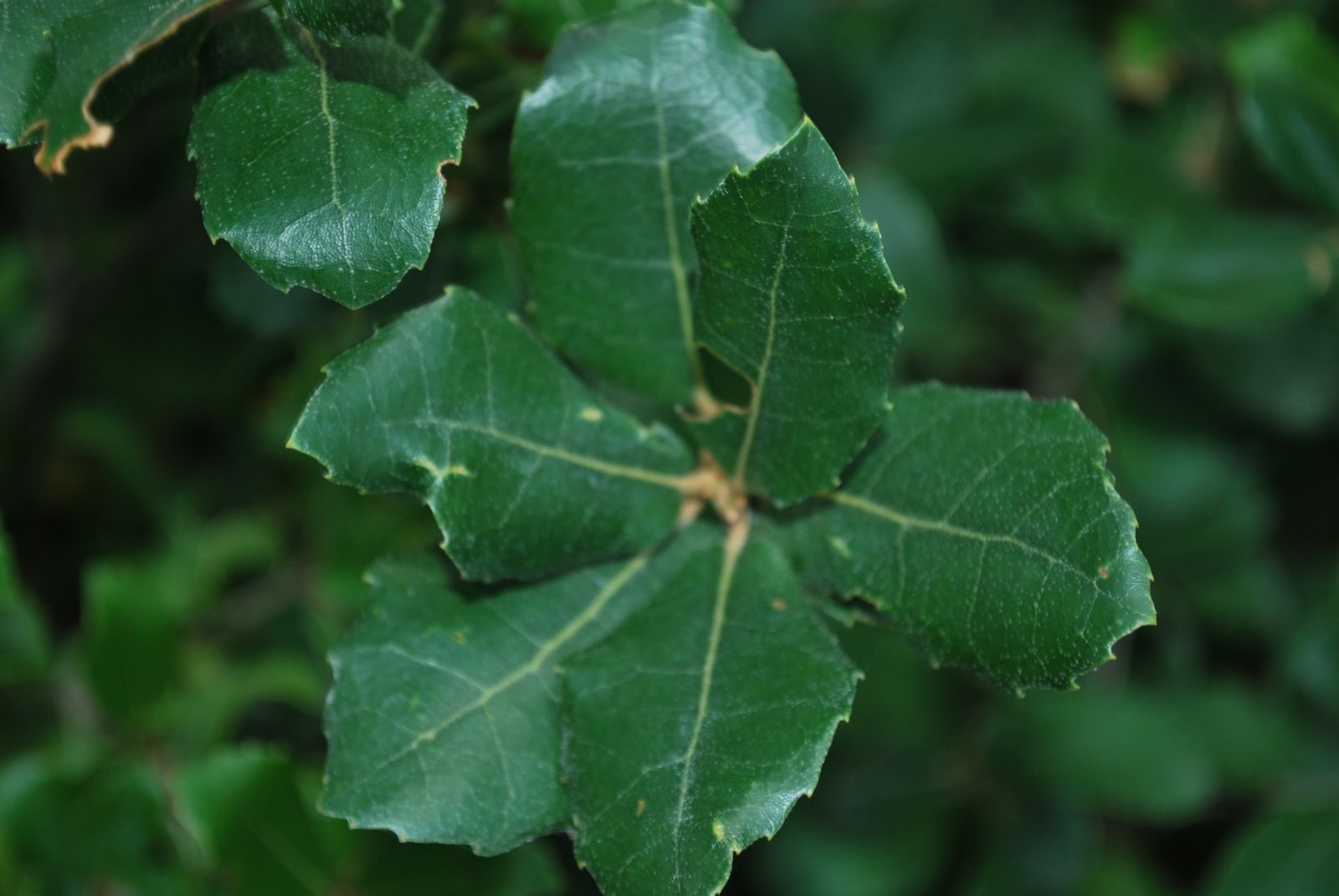3 Litre Pot
- Position: Full sun, shade
- Soil: Well drained
- Growth rate: Slow
- Hardiness: H5
- Eventual height: 10m
- Eventual spread: 10m
Quercus Phillyreoides, also known as the ‘Ubame Oak’ is a medium sized evergreen tree that is native to the south western United States and northern Mexico. It is a member of the Fagaceae family is is closely related to other oaks.
The Quercus Phillyreoides can grow up to 10 metres tall and wide and has a broad, spreading canopy with leathery, glossy, elliptical or oblong shaped leaves that are typically 4-8 cm long and 2-5 cm wide. The leaves are dark green on the upper surface and pale green beneath. The flowers are small and inconspicuous, produced in separate catkins that emerge in the Spring. The acorns are large and ovoid, typically 2-3cm long and 1.2cm in diameter, with a cupule that covers about one third of the nut.
This is a hardy plant that is well adapted to a range of soils, including sandy, rocky and clay soils. It prefers full sun, but can also tolerate partial shade. It is tolerant of drought, heat and cold temperatures, making it a popular choice for use in dry regions.
In terms of uses, it is valued for its ornamental qualities, providing year round interest with its glossy foliage and large acorns. It is also a valuable resource for wildlife, providing food and habitat for birds and mammals.
Overall, this is a versatile and attractive tree that is well suited to a range of garden styles and climates. It is relatively low maintenance, requiring little water or fertiliser once established. With proper care and maintenance, it can live for several hundred years, making it a lasting addition to any landscape.
How to care for your Quercus Phillyreoides
- Soil: Prefers well-drained soil that is neutral to slightly acidic. It can tolerate a range of soils, including poor and rocky soils. If the soil in your area is heavy or clayey, consider amending it with sand, perlite, or organic matter to improve drainage.
- Watering: It is relatively drought-tolerant but will benefit from regular watering during the first few years after planting to establish a strong root system. Water deeply once a week during the growing season, and reduce watering during the Winter months. Avoid over-watering, as this can lead to root rot.
- Fertilising: Does not require regular fertilisation, but you can apply a slow-release fertiliser in the early Spring to provide some additional nutrients. Avoid over-fertilising, as this can lead to excessive growth and reduced hardiness.
- Pruning: Does not require regular pruning but can be pruned to remove dead or damaged wood, improve its shape, or reduce its size. Prune in late Winter or early Spring before new growth begins.
- Mulching: Applying a layer of mulch around the base of the tree can help retain moisture, suppress weeds, and regulate soil temperature. However, be careful not to pile the mulch up against the trunk, as this can lead to rot.
- Propagation: It can be propagated from seed or by taking semi-hardwood cuttings in the summer. If propagating from seed, make sure to scarify the seeds before planting to improve germination rates.
By following these care tips, your Quercus Phillyreoides should thrive and provide you with year-round interest and beauty. Remember that this is a long-lived tree, so consider its mature size and placement carefully before planting.















Reviews
There are no reviews yet.